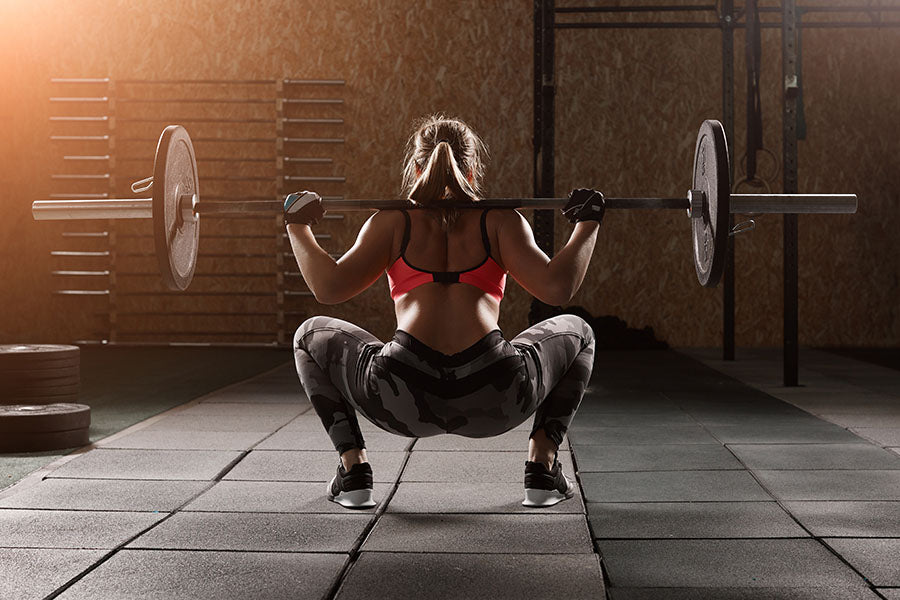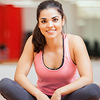Are you looking for the best exercises for leg gains other than squatting? If so, you have come to the right place! Squats are an incredibly effective exercise for building strength and muscle in your lower body, but they aren't the only way to get those gains. There are a variety of other exercises that can help you develop strong and toned legs without relying solely on squats.
This article will explore four of the best exercises for leg gains other than squatting. These range from traditional weightlifting moves to more advanced bodyweight exercises. Each of these exercises targets different muscles in your lower body, allowing you to build comprehensive strength and definition in your legs.
From lunges to step-ups, these exercises offer a unique way to isolate different muscles and strengthen your legs. Regardless of your current strength level or experience with weight training, these exercises can be adjusted for all levels of ability. Read on to find out which exercises are best for leg gains other than squatting.
Leg Muscles
Most leg muscles are considered long muscles because they extend over great distances. As these muscles contract and relax, they cause the skeletal bones to move, causing the body to move. Smaller muscles assist larger muscles in strengthening joints, facilitating joint rotation, and other fine movements.
Quadriceps (Quads)
The muscles that make up your thighs are called the quads. They extend or bend your knees and straighten your hips. The quadriceps consists of four individual muscles: vastus lateralis, rectus femoris, vastus medialis, and vastus intermedius.
- Vastus lateralis: This is the largest of the quadriceps on the outside of the thigh. It goes from the top of the thigh bone to the kneecap, which is called the patella.
- Vastus medialis: This teardrop-shaped muscle is on the inside of the thigh and joins to the femur and the inside of the kneecap.
- Vastus intermedius: This is the deepest quadriceps muscle. It is located between the vastus medialis and vastus lateralis at the front of the femur.
- Rectus femoris: The kneecap is attached to this muscle. It has the least effect on how far the knee bends out of all the quadriceps muscles.
Hamstrings
The hamstrings are at the back of your thighs. These are a group of three muscles that help move the hips and knees. They start under the big gluteus muscle behind the hip bone and end at the knee, where they attach to the tibia. These are:
- Biceps femoris: This long muscle is the biceps femoris. It bends the knee. It starts in the area of the thigh and goes to the head of the fibula, which is near the knee.
- Semimembranosus: As is the name, this long muscle goes from the pelvis to the tibia. It makes the thigh longer, bends the knee, and helps the tibia turn.
- Semitendinosus: This muscle also moves the knee and thigh outward and inward.
Related Article: 10 Essential Hamstring Exercises to Build Muscle and Boost Your Athleticism
Benefits of Leg Exercises
Leg exercises have numerous benefits that can help people improve their overall physical health and well-being. Let's have a look at some of them.
Improved Mobility
Leg exercises can help increase your range of motion and mobility, allowing you to do more activities with less difficulty. Additionally, improved mobility can help reduce the risk of injury and make everyday movements easier, such as walking or getting up from a chair.
Stronger Muscles
Strengthening your leg muscles can improve your overall muscular strength and stability, which helps to support your posture and make heavier tasks manageable. For example, strengthening your leg muscles can make climbing stairs less strenuous and help reduce back pain when lifting heavy objects.
Related Article: Hip Flexor Exercises to Improve Strength and Flexibility
Healthier Joints
Resistance training for lower body muscles helps strengthen the stabilizing joints responsible for bearing most of the body's weight during movements, such as the knees and hips. Regularly engaging in leg exercises can also help improve joint flexibility and lubrication to reduce stiffness, aches, and pains.
Improved Balance
Exercises like squats or lunge variations can help build muscle strength throughout the lower body while also improving balance by increasing neuromuscular control within the ankles and feet.
This can be especially beneficial for elderly populations who are at an increased risk of falls due to multiple age-related factors, including impaired cognition, reduced visual acuity, and decreased physical strength in major muscle groups of the lower extremities.
4 Must-Try Leg Exercises
If you're looking to add some variation to your bodybuilding leg workout without squats and gain impressive, powerful results, then you should try these four best exercises for leg gains other than the traditional squatting, which will help develop strength and size in your quads, hamstrings, glutes, and calves.
1. Dumbbell Bulgarian Split Squat

This exercise is an excellent way to target your glutes, quads, and hamstrings.
- To do this exercise, take a rear-leg stance with one foot placed on the ground and the other resting on an adjustable bench behind you.
- You then lower your body until both knees are bent at 90-degree angles.
- At this point, you should feel the tension in both your front and back legs before pushing into a standing position while maintaining proper form throughout the movement.
2. Dumbbell Sumo Squats

This squat variation will help you target those stubborn inner thighs and glutes that can be hard to hit with regular squats.
- To perform this exercise, stand with your feet slightly wider than shoulder-width apart with your toes pointed outwards. Hold a dumbbell in between your legs with both hands.
- Quickly descend into a squat position as low as you can go without arching your back or compromising your form.
- Once at the bottom of the squat again, ensure proper form before pushing back up through your heels for maximum activation of those hard-to-reach muscles.
3. Forward Lunges

The forward lunge is a great functional exercise that helps develop strength and stability in many of our everyday activities.
- To start off, begin by holding a pair of adjustable dumbbells at each side as you take a large step forwards while bending both knees to 90 degrees so that they are stacked over each other's ankles.
- Push off from this position and repeat on the opposite leg.
4. Single Leg Deadlift

Training both legs independently by doing unilateral exercises like single leg deadlifts helps develop strength in each limb separately, which can help avoid injury down the line.
- Grab a pair of dumbbells in each hand and stand shoulder width distance.
- Take one foot off the ground and hinge your hip backward.
- Allow your torso to come down simultaneously.
- You should reach the weights towards the top of your foot.
- Go down until your torso and extended leg are parallel with the ground.
- Stand back up straight before performing another rep.
FAQs
1. How many sets should I do for each exercise?
Generally speaking, performing 3-4 sets of 8-12 repetitions for each exercise is recommended when targeting muscle growth or strength gains. This is usually enough to elicit a training response from your muscles and make them grow bigger and stronger over time.
2. What muscles do these exercises target?
Most leg exercises will work for multiple muscle groups simultaneously, but some are better at targeting certain areas than others. Leg exercises primarily target your quads (the front muscles of your thighs), glutes, calves, and hamstrings (the back muscles of your thighs).
3. Is it better to do low or high reps for muscle growth?
The best way to stimulate muscle growth is through a combination of low rep/heavy weight sets combined with higher rep/lightweight sets in order to cause muscular fatigue, which will lead to increased size in targeted areas over time if done consistently with proper form.
Low reps refer to doing sets with heavier weights (generally 5 reps or less) which put greater strain on your muscles – this causes microtrauma, which will help spur growth within those particular muscles when given proper time to rest in between workouts.
4. How many days per week should I be exercising my legs?
It's recommended that individuals train their legs two times per week at minimum in order to ensure adequate rest periods between workouts so that their muscles can repair themselves properly between sessions.
Working out with inadequate recovery time can lead to overtraining, causing physical exhaustion and a possible injury due to fatigue caused by a lack of rest days in between workouts.
Conclusion
Leg exercises are essential for building strength and size in your legs and lower body. Not only do these exercises help you build muscle, but they also increase your flexibility, joint stability, and overall mobility. The four must-try best exercises for leg gains other than squatting discussed in this article are a great way to start adding volume to your leg workouts.
With regular practice of these leg exercises, you can expect improved strength gains and an increase in overall leg muscle mass over time. Remember to always warm up before any exercise routines to ensure that you don't injure yourself during your workouts.











